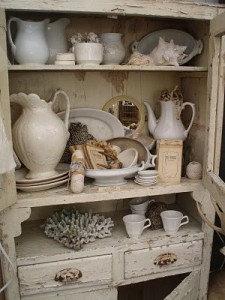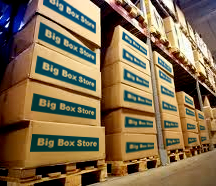 Are you ready to downsize? Do you get stuck when trying to let go of items to which you have a sentimental attachment? Well, here are some tips to help you move forward:
Are you ready to downsize? Do you get stuck when trying to let go of items to which you have a sentimental attachment? Well, here are some tips to help you move forward:
HAVE A TREASURE HUNT
Consider the process of downsizing a treasure hunt. You’ve collected and inherited a plethora of items, now it’s time to select your treasures and let go of the rest.
USE MEMORY TRIGGERS
Ask yourself if you have other items that can serve as better memory triggers. For example, could you let go of brochures or souvenirs from travels because you have photos of the trip? Could you let go of Grandma’s broken sewing machine because you have her pearls? Another great option is to photograph items to preserve your memories, then release what you don’t use or love.
THE HEAD VS. HEART APPROACH
Let your storage space dictate how many of a category you will keep. You might decide that one shelf in your closet is practical to store your vases. If you have more than will fit that space, let go of your least favorite or seldom used ones.
Consider using numbers to help keep you logical, rather than emotional. For example, ask yourself how many of a specific item seems practical to keep. Four black purses seems generous. You have nine. Let go of five of your least favorite ones.
THE JOY FACTOR
Another way numbers help is by using The Joy Factor. Use a scale of 1 to 5, with 5 meaning ‘great joy‘ and 1 meaning ‘not so much’. Now, ask yourself where on the scale an items falls. If you want to downsize in a big way — you might keep only 5’s as these are your treasures.
PLEASE DON’T TOUCH!
Some people find that holding and touching an item greatly increases their attachment. If that’s you, you’ll want to have a friend, family member, or professional organizer help you. Have the other person hold up items so you can say “yay” or “nay.”
Letting go can be hard, but I assure you that the results will be well worth the effort. Living in a clutter-free environment promotes clarity, focus, peace and happiness.
What items do you find hold the most sentimental attachment?
 I often remark that Sam’s Club, Costco and BJ’s keep me in business. Frequently, the first thing I recommend to my clients is that they reduce their purchases to essential items. I recognize “essential” is a relative concept, but people understand that we often consume needlessly & impulsively. The heart of disorganization often comes from having an abundance of merchandise. We are exhorted to over purchase by all the agencies of mass media. Their business is to encourage spending and our business is to purchase with discretion.
I often remark that Sam’s Club, Costco and BJ’s keep me in business. Frequently, the first thing I recommend to my clients is that they reduce their purchases to essential items. I recognize “essential” is a relative concept, but people understand that we often consume needlessly & impulsively. The heart of disorganization often comes from having an abundance of merchandise. We are exhorted to over purchase by all the agencies of mass media. Their business is to encourage spending and our business is to purchase with discretion.
Purchasing has a complicated physiology; why do rational people over purchase? There are several factors at play here. Mass media is not the only culprit; the availability of credit cards enables people to consume beyond their needs. According to Los Angeles clinical psychologist and wealth consultant James Gottfurcht, PhD, “They’re conditioning people into building debt at a very young, vulnerable age.”
Other major factors that contribute to overspending according to research by Florida State University social psychologist, Roy Baumeister, PhD is too many demands in stressful situations and dealing with difficult relationships.
Finally, the idea that consumerism leads to happiness has proven to be an illusion; according to a post by Rebecca Sato. “Researchers have found that low self-esteem and materialism are not just a correlation, but also a causal relationship where low self esteem increases materialism, and materialism can also create low self-esteem.”
In conclusion, when we find ourselves losing control over our environment, we have to ask ourselves why and put ourselves back in charge of our lives by making conscience decisions based on real needs. As Thoreau so aptly stated, “simplify.”
We buried Tiger on Saturday. When you have a very old pet, you hope they will give you a sign, letting you know that “it’s time.” And then, when they do, you don’t want to believe it. Tiger was 21 — really old for a cat — and we are grateful for every year we had with this wonderful, loving, dignified friend.
A few months ago, I wrote about how we had modified our home in order to help Tiger age in place. (Helping Tiger Age in Place). Since Saturday, I’ve been thinking about how Bill and I became Tiger’s caregivers as he became increasingly frail. Although the tasks were sometimes unpleasant, we did them without disgust or resentment. I was in charge of litter duty. During his last year of life, Tiger drank huge quantities of water because his kidneys were failing and routinely urinated outside the litter box, even though we had lowered two sides so he could step in more easily. I also cleaned Tiger when he fell into the litter because his hind legs could no longer support him as he squatted. I am not surprised that Bill was a wonderful caregiver; nurturing is second nature to him. But I am a let-me-cross-things-off-my-list kind of person, not a let-me-help-you kind of person. I am worried about my ability to provide the kind of assistance a love one may need some day.
Yes, I prepared my mother-in-law’s medications each week and took care of my mother’s medical bills, but these were list-type tasks, not the intimate, embarrassing, personal tasks that often accompany caregiving. I’m worried I won’t be good enough, or selfless enough, when the time comes. I know I did it with Tiger, but Tiger was not my husband or my parent.

Next week, we will rescue Jackson, a 12 week old kitten, from a nearby shelter, just as we rescued Tiger 21 years ago. It’s not that we are trying to replace Tiger —Tiger can’t be replaced. It’s that we have experienced the joy of living with pets and know that this is the way we want to live our lives.
But I can’t get a replacement mother or husband a week later. Perhaps it is this permanence that makes caregiving for loved ones so much harder than caregiving for a pet. But who knows. I was a better caregiver than I thought I would be with Tiger, perhaps I will be better than I expect with the people I love as well. I hope so.
In the spirit of the New Year, I’m here to answer the burning question that you may have…sorry, it’s not the recipe to my homemade cookies…that will remain a mystery, even to my colleagues at NAPO-GPC who I have baked them for! The true question is, how long does it really take for a habit to form? Do a Google search, like I did and you’ll find many different answers. If you’re like me, you won’t get to page 2 of your search, as you just want the clear answer!
It’s the same with New Year’s resolutions. We want what we want and we want it now! Waiting is a difficult thing, in this age where technology is fast but we want it to be even faster. Frustrations abound when there isn’t any instant gratification and hence people give their resolutions up so quickly.
So, what is that answer to: how long does it really take for a habit to form? Well, honestly, there isn’t a magic number. The consensus from the Google answers is that it takes between 21 and 28 days. I know, that can seem daunting, but there are ways to keep your goals and still have fun.
 When it comes to organizing, (and I’m assuming that’s one of your goals because you are reading a blog on a site in which we help people get organized!) start small. Have you heard the quote from Francis of Assisi, “How do you eat an elephant? One bite at a time!”? If you push yourself and do too much before you’re ready for it, then you may feel like giving up. Try these simple methods to help you get organized a little bit every day, when you might not even think to, so that before you know it, it may just become your favorite habit! Well, a close second, maybe? Ha ha!
When it comes to organizing, (and I’m assuming that’s one of your goals because you are reading a blog on a site in which we help people get organized!) start small. Have you heard the quote from Francis of Assisi, “How do you eat an elephant? One bite at a time!”? If you push yourself and do too much before you’re ready for it, then you may feel like giving up. Try these simple methods to help you get organized a little bit every day, when you might not even think to, so that before you know it, it may just become your favorite habit! Well, a close second, maybe? Ha ha!
1) TV Commercial Breaks – Use these 2-3 minute chunks of time during your favorite shows to organize a shelf or a drawer.
2) On a Phone Call – You know those people in your life who just like to talk your ear off on the phone! You don’t need to neglect them, just put the caller on speakerphone and you have your hands free to straighten up a closet, hang up clothes or put away laundry.
3) While Cooking Dinner – Use this time to straighten up your kitchen counters and go through junk mail.
-Or-
4) Just pick any time! Use a timer, either a good old kitchen timer or the one from your smart phone and set it for 15 minutes. See what you can get done in that time in the area of your choice and if you feel motivated to do more, then do it! If not, then don’t!
One final tip is to keep a tote or basket handy, in a central location, for each member of the household. As you are organizing, you are bound to find items that belong to others in their bedrooms or in other rooms. Once a day, make sure that the items from the basket are brought to each respective area by the person it belongs to. With the new tips you’ve learned, you can teach everyone else in the family how to organize just a “bite” at a time too!
1. Make it Easy
2. Make it Fun
3. Make it Colorful
Organizing habits learned early on and made part of a child’s lifestyle routine are skills that they can keep with them through adulthood. Whether it’s the alphabet, math or organizing, whether in school or in the home, what our children are taught gives them the knowledge and wisdom to excel!
Make organizing easy, fun and colorful for your children and you’ll teach them early organizing skills for a lifetime.
In July, I was in a new doctor’s office and they handed me a three page Medical History to fill out. You are kidding me right? Another pathetic Boomer moment (okay, I hate the term Baby Boomer but haven’t come up with a better one).
Regardless of how I feel about my doctor asking for so much information, I realize it is important. Especially if you consider that preventable medical errors are the sixth biggest killer in America, according to the Institute of Medicine. It is important to have your information well organized so you can locate it when you need it. Sometimes a family member will need access to your medical information as well, like I did with my mother.
Last summer my mother was hospitalized for an unknown illness. It took them three days to figure out what she had. My sister and I took her to the emergency room and they were asking all kinds of questions that we could not answer. Things that were relevant, like what types of medications she was taking, what other diagnoses she had and some other stumpers. My mother has chosen not “to burden her children with this nonsense.” Luckily my mother saw the value in paying the fee to become a private patient when her physician’s office changed their business model. We had great access to information from his office, on a Friday night!
I immediately started tracking different things in Evernote. Now every time I go to the doctors I record my blood pressure, and why I went to see them. I have created a record of what meds and vitamins I am taking. I have also gone back and recreated what I could by looking at my insurance company web site, and that has jogged my memory.
Does it matter if it is on paper or electronic? Not at all. I have one client who uses a notebook. We divided it up into sections by medical issues- cardiac, back, skin etc. I prefer the electronic method, however it is important that someone know how to access the information.
What should be included in your record?
I always keep a list of questions for the doctor with my records.
Now that you have a clearer idea of what you need to do to be more prepared to manage your health… go ahead, get started. It could be a life saver!